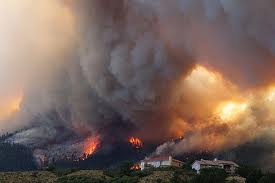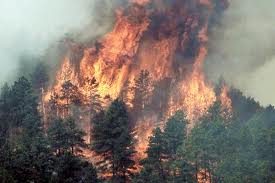
Waldo Canyon Fire, Courtesy of CS Monitor
It is tragic what the fires have done (and are still doing) to Colorado. Yes, nature has its way of doing things and it might be the natural order, but they have devastated so much in the last month.
People have lost their childhood homes, animals have been displaced, and as a result of the chaos vandalism has ensued in some areas. My thoughts are with the crews battling the fire and those who’ve been affected by it…in the deepest way.
It probably comes as no surprise that social media has played a large part in sharing fire news. Twitter, in large part, has become the vehicle for such practice. Twitter users can easily get updates about recent occurrences just by checking their feeds. They can look at what’s trending, or search for certain hashtags, like #HighParkFire (a fire near Fort Collins, CO) to get the latest. Disaster relief organizations are also scanning Twitter feeds to get information about what’s happening on the ground.

High Park Fire, Courtesy of 3News
Two Colorado Springs residents, Scott Seibold and Robbie Trencheny, developed an application that accumulates tweets that pertain to their area, such as #WaldoCanyonFire, #WaldoFire, #waldocanyon, and Colorado Springs. They hope to broaden the tool so that it covers other fires in Colorado. The application is user-friendly, so you don’t have to be a Twitter genius to understand it. It makes Twitter uncomplicated and intuitive for the average user.
I’ve said this before and I’m not ashamed to say it now. All of my news comes from scanning Twitter feeds. I follow who I think is reliable and I’m constantly up to date with what’s going on. Social media is a powerful tool, and no one should take for granted its ability to move information much faster than your local news station.
